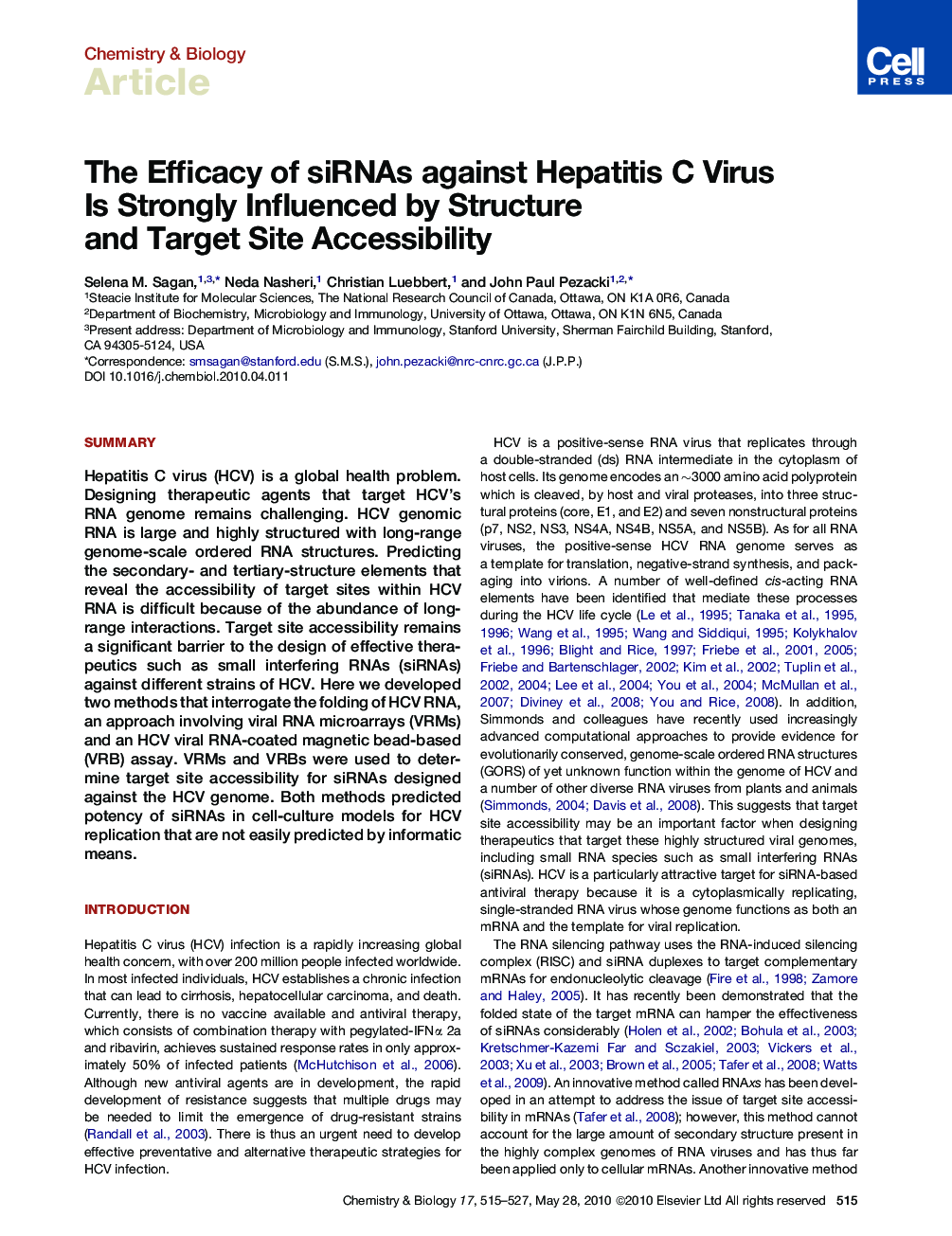| Article ID | Journal | Published Year | Pages | File Type |
|---|---|---|---|---|
| 1391591 | Chemistry & Biology | 2010 | 13 Pages |
SummaryHepatitis C virus (HCV) is a global health problem. Designing therapeutic agents that target HCV's RNA genome remains challenging. HCV genomic RNA is large and highly structured with long-range genome-scale ordered RNA structures. Predicting the secondary- and tertiary-structure elements that reveal the accessibility of target sites within HCV RNA is difficult because of the abundance of long-range interactions. Target site accessibility remains a significant barrier to the design of effective therapeutics such as small interfering RNAs (siRNAs) against different strains of HCV. Here we developed two methods that interrogate the folding of HCV RNA, an approach involving viral RNA microarrays (VRMs) and an HCV viral RNA-coated magnetic bead-based (VRB) assay. VRMs and VRBs were used to determine target site accessibility for siRNAs designed against the HCV genome. Both methods predicted potency of siRNAs in cell-culture models for HCV replication that are not easily predicted by informatic means.
Graphical AbstractFigure optionsDownload full-size imageDownload high-quality image (182 K)Download as PowerPoint slideHighlights► Hepatitis C virus RNA is highly structured and its structure influences the target site accessibility of small interfering RNAs ► The HCV RNA structure elements can be preserved under certain conditions, allowing for the development of native viral RNA microarrays and viral RNA-coated magnetic beads, which represent exciting screening tools for investigating the native folded structure of HCV RNA ► Viral RNA microarrays and viral RNA-coated magnetic beads predict siRNA potency against hepatitis C virus RNA ► The most potent siRNAs of the ones tested against the hepatitis C virus are siRNAs that target unstructured regions of the genomic RNA where target sites are highly accessible
